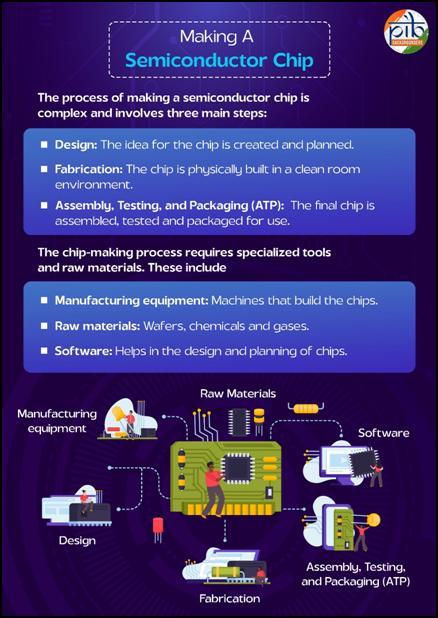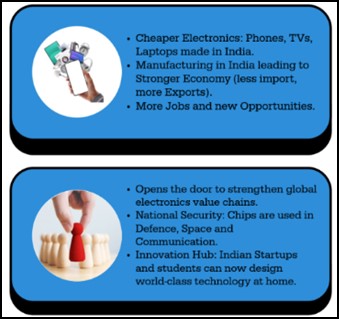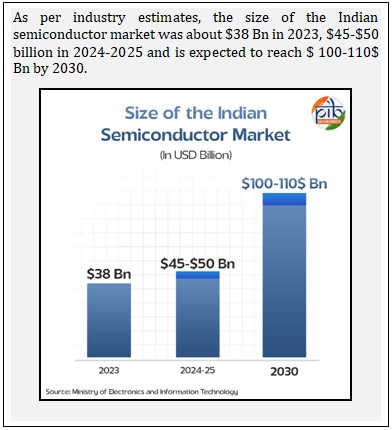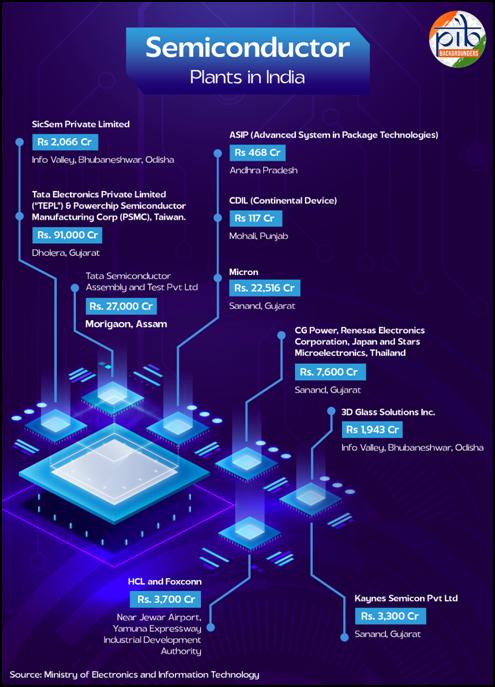“Today's India inspires confidence in the world… When the chips are down, you can bet on India.” ~Prime Minister Narendra Modi
India is now moving towards the semiconductor industry, which is helping in India’s technological landscape with many important government schemes as well as fresh investment fueling innovation, in job creation and with self-reliance in this critical sector. In just four years of the launch of the India Semiconductor Mission (ISM) in 2021, India has transformed its semiconductor journey from vision to reality, and for this, according to PIB, the Indian Government has already announced of 76000 crore Production Linked Incentive (PLI) Scheme and in which 65,000 crore are already committed.
This year, in 2025, there will be the fourth edition of India Semiconductor Mission (ISM), and as a part of its efforts to become the hub of Semiconductor, Indian Prime Minister Narendra Modi will inaugurate the SEMICON India 2025 on September 02, 2025, in New Delhi.
A defining chapter in India's semiconductor journey is unfolding, with innovation and investment driving a new wave of growth. Addressing Semicon India 2025 in Delhi. https://t.co/5jurEGuYnI
— Narendra Modi (@narendramodi) September 2, 2025
In this article, we will explore SEMOICON India 2025, why semiconductors matter, and India's Vision for the future
SEMICON India 2025: Where Innovation Converges

Source: PIB
On September 2, 2025, India's Prime Minister Narendra Modi will inaugurate the grand opening of SEMICON India 2025 in New Delhi. This will be India’s biggest gathering for semiconductor professionals and companies yet.
More than 350 companies from 33 nations and regions will be present to show India’s rise in the field of semiconductors. In this grand event, there will be no invitations for giant companies who are already in the semiconductor field, but also there will be many emerge for new start-up companies, for students, for researchers, and scholars to discuss breakthroughs and make deals with the witness emerging tech firsthand.
A major milestone was recently hit in Gujarat, with the launch of India's first OSAT (Outsourced Semiconductor Assembly and Test) pilot line, paving the way for the first fully "Made in India" chip.
Why Semiconductors Matter?

Source: PIB
Semiconductors are a very important material and play an important role in the backbone of modern rechargeable battery technology. These materials help in various applications like charging phones, help in hospitals for saving lives, and keeping the smart transport and even with the help of a semiconductor chip, it also helps in the Chandrayan-3 lunar mission with an advanced India-made chip
These tiny components have become symbols of national security and economic strength—especially when global supply chain disruptions (like the COVID-19 pandemic or geopolitical tensions) proved how vulnerable the world is when relying too much on a handful of countries.
What are the Government and Industry Efforts toward the growth of the Semiconductor sector in India?
India is conquering foundational challenges in chip design, packaging, and fabrication. With the Design Linked Incentive (DLI) scheme supporting 23 chip design projects, local startups like Vervesemi Microelectronics are making high-end chips for defence and electric vehicles, turning India from a mere consumer into an inventor.

Source: PIB
Key Investments and Projects
Recent investments are sparking new jobs, new startups, and world-class research centres:
-
Major players include: Micron Technology, Tata Electronics, CG Power, HCL-Foxconn JV, SicSem Pvt Ltd, and 3D Glass Solutions, among others.
-
Advanced facilities: Pilot lines and manufacturing units in Gujarat, Odisha, Punjab, and Andhra Pradesh are moving from silicon-based chips to more robust, next-generation materials like Silicon Carbide (SiC).
-
Skills & jobs: New projects are creating thousands of skilled positions, with extensive workforce development programs training students and young engineers nationwide.
What are the Government and Industry Efforts toward the growth of the Semiconductor sector in India?
SEMICON India 2025 doesn’t just highlight technology—it addresses the need for sustainability and workforce diversity. Special programs attract students to STEM careers, with the aim of building a million-strong talent pipeline by 2030. Training workshops, university partnerships, and "Chip In!" sessions at the event are designed to spark curiosity and develop expertise in all aspects of microelectronics.
Environmental concerns—like emissions and resource efficiency—are in sharp focus, as is supply chain resilience. High-level roundtables bring global leaders together to discuss manufacturing strategies and the risks posed by economic shifts or climate change.
India’s Vision for the Future
India is nurturing a robust ecosystem for semiconductor innovation. Ten major projects are underway, alongside pioneering research centres for ultra-modern chip designs, and extensive government support is unlocking India’s potential across all segments—design, manufacturing, research, and packaging. The India Semiconductor Mission organises training, research, and collaboration that empower future engineers and drive indigenous invention.

Source: PIB
India’s progress is powered by strategic planning, strong industry partnerships, and vast talent development, bridging gaps in the global supply chain. As a result, “Designed and Made in India” technology is poised to impact not just domestic industries, but the world at large—shaping a future where India is recognised as a semiconductor powerhouse.
India’s semiconductor journey is much more than an industry story; it’s about global leadership, sustainable growth, and technological empowerment for generations to come.
Comments
All Comments (0)
Join the conversation